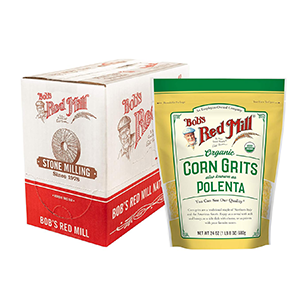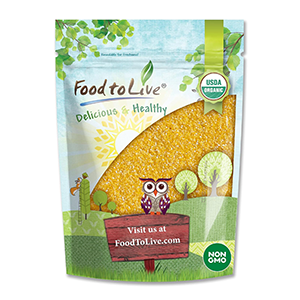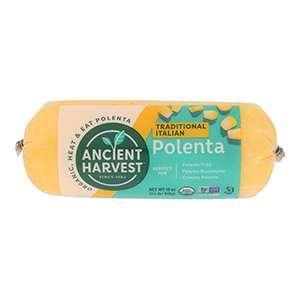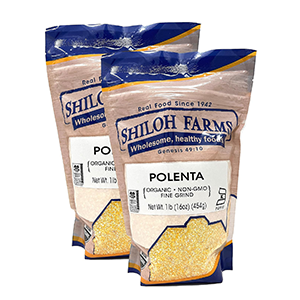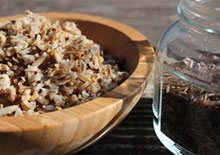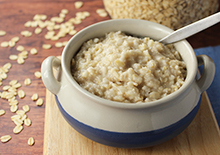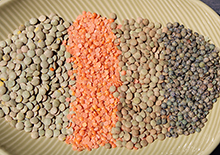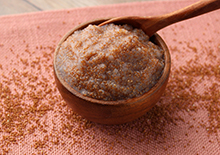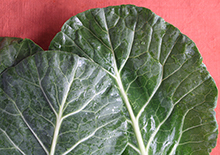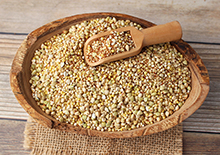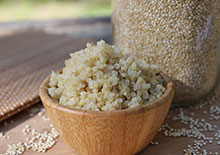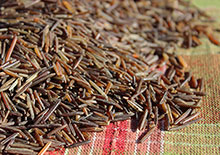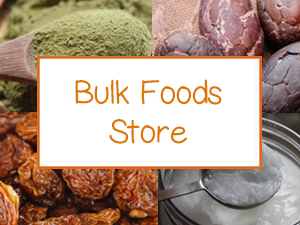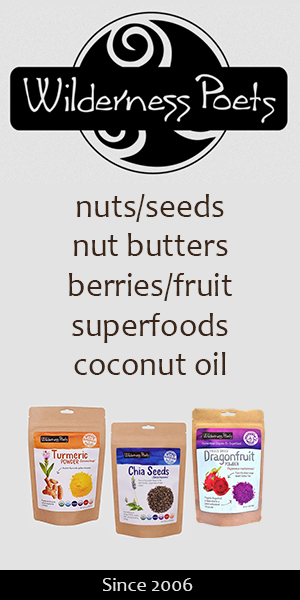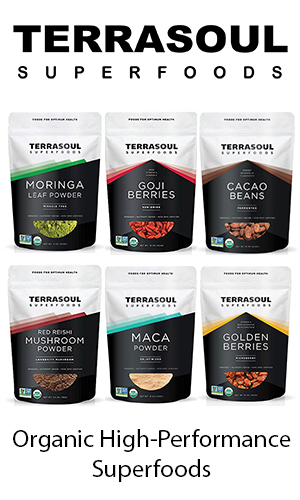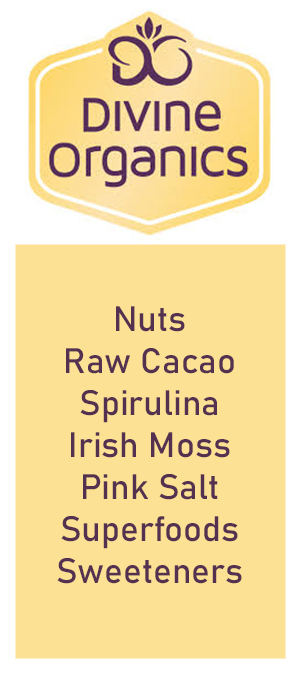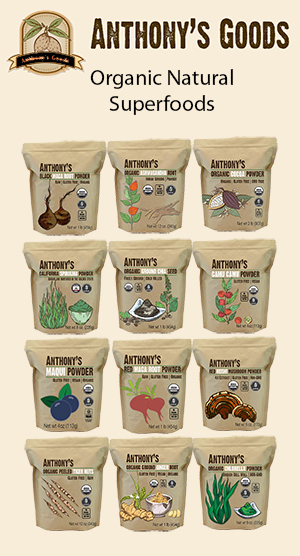- Home
- Plant-Based Cooking
- What is Polenta?
What is Polenta? 11 Commonly Asked Questions
What is Polenta? | Polenta Vs Grits | Other Types | Taste | How to Serve | Where Originated | Nutrition Value | How to Cook | Making Firm | Gluten-Free | Best Kind | Precautions | Shop
1) Is Polenta the Same Thing as Cornmeal?
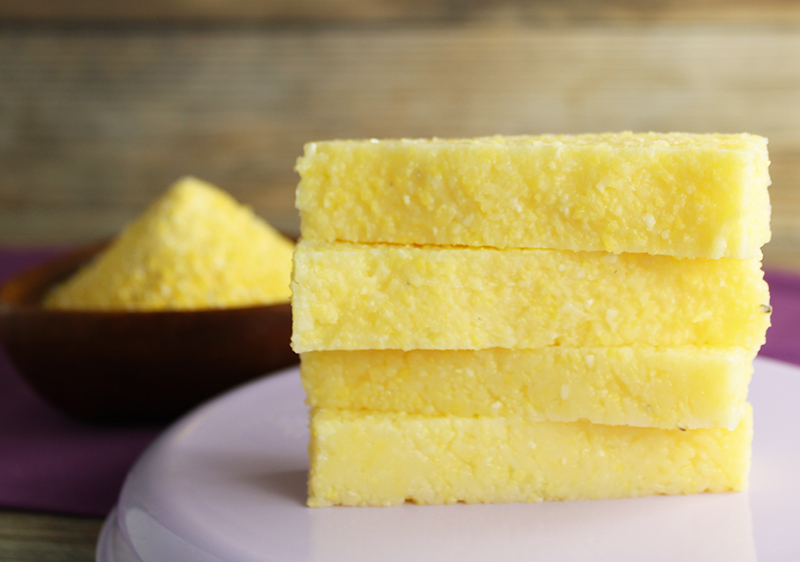
Generally speaking, polenta can be considered a type of cornmeal which technically means milled corn or maize.
The common cornmeal that most people are familiar with is steel-milled which removes most of the husk and germ of the corn. Stone-ground cornmeal is like polenta as it retains more of the whole kernel.
Cornmeal types tend to have a uniform texture and are better than polenta when used as a flour for baked goods like cornbread.
Polenta meal is most always a medium coarse uneven texture, but cornmeal that's labeled "coarse ground" is often used interchangeably.
Neither polenta or cornmeal are from the sweet "corn on the cob" variety but dry hard corn species.
2) What is Polenta Vs Grits?
Table of Contents
What is Polenta? | Polenta Vs Grits | Other Types | Taste | How to Serve | Where Originated | Nutrition Value | How to Cook | Making Firm | Gluten-Free | Best Kind | Precautions | Shop
Geographically speaking, polenta is a popular staple in Italy and grits, a type of porridge, are a traditional dish served in the American South.
Polenta is often made from a type of whole "flint corn" (otherwise known as Indian corn) whereas grits are often made from white "dent corn" (or hominy) variety.
Both polenta and grits have a similar consistency and flavor but grits is creamier when cooked. Polenta is firmer and tends to congeal more when cooled.
On average, polenta is usually made from yellow corn while grits often comes from white corn.
3) What Else Goes by the Name Polenta?
The term "polenta" once referred to a type of food that could be made from any starchy ground grains or legumes such as millet, sorghum, buckwheat, farro, spelt and chickpeas.
After corn or maize were brought to Europe from Mexico, many polenta dishes began to be corn-based. That's because
corn not only provides a better texture and flavor, it's also a relatively easy crop to grow.

4) What Does Polenta Taste Like?
Polenta has a mild neutral corn flavor with a creamy soft or firm texture depending on when it's served.
Fresh hot polenta will mold to any shape it's stored in when cooled due to the gelatinization of starch content.
5) How Do You Serve Polenta?
Polenta can be served as a type of breakfast porridge when hot. When cooled and congealed it can be sliced and reheated via frying, grilling, steaming or baking, still retaining its firm quality.
Polenta pairs well with most sauces, sweet or savory, as well as meats, sausage, eggs, cheese and vegetables. It is also common to add ingredients like fresh green herbs, sundried tomatoes, cheese, milk and butter to polenta when cooking it.
It can be used as a replacement for grains, pasta, potatoes or bread when served with a meal.
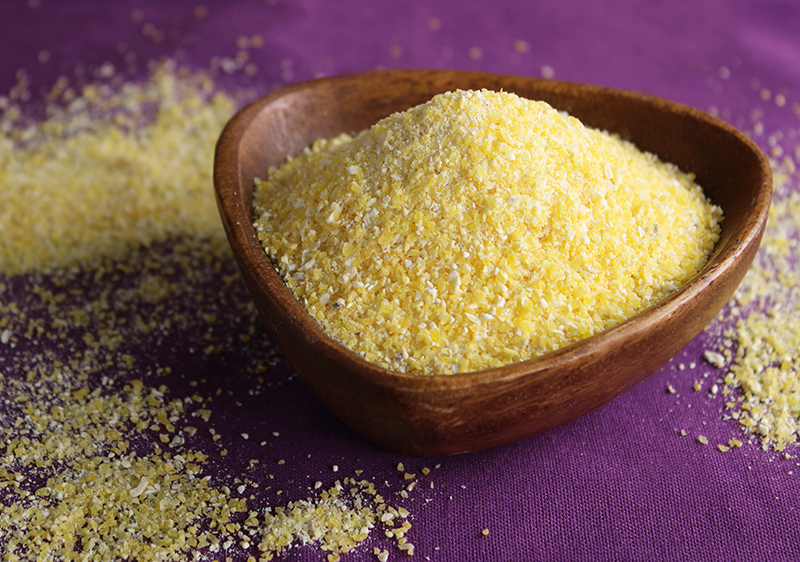
6) Where Did Polenta Originate?
Polenta is considered an Italian inspired dish.
After corn was brought to Europe in the 15th century, polenta became a staple peasant food, especially among Northern Italians, Swiss Italians and the southern French. It was traditionally served firm-style directly on a wooden board at the dining table.
Today, polenta is a widely celebrated food in many parts of Italy with polenta festivals occurring throughout the year.
7) What is the Nutritional Value of Polenta?
Cooked polenta has a high total carbohydrate and low fiber ratio, giving it a higher "net carb" amount. So while you wouldn’t find it on a keto diet menu, if you're looking for a complex carbohydrate to substitute things like pasta or grains, polenta is for you.
According to Bob's Redmill nutrition facts, whole kernel yellow corn polenta has about 140 calories per 1/4 cup serving.
Plain cooked polenta, and the corn it's derived from, isn't a great source of vitamins and minerals, but it does contain small amounts of protein and minute amounts of fat.
Interestingly, we came across some information stating that 18th century Northern Italian peasants, who consumed polenta as a major part of their calorie intake, were deficient in vitamin B3, also known as niacin.
As a part of a well-balanced diet, however, polenta can be a great option for those looking to replace other staple starches like pasta, bread or rice.
8) How Do You Cook Polenta?
The common medium-coarse polenta in our opinion is much easier to cook. Some traditions that use finer varieties need to be carefully added to avoid clumping.
Polenta generally involves a bit more attention when preparing it. It's mostly done on a stovetop and requires constant stirring to create a smooth consistency and thickness. We like to use a flat-ended wooden utensil for this process as it helps to evenly scrape the bottom of the pot so it doesn't burn.
Polenta uses more water and will absorb it quickly when heated. Most recipes call for one cup of polenta to four cups of water and a pinch of sea salt. We, however, find that five cups of water provides a better texture.
To make it, slowly add the polenta to the boiling salted water and stir. Then, turn down the flame to the lowest heat setting. It is best if you continually stir it, but tending to it every 5 minutes can also work.
It takes about 20-30 minutes or so to completely cook it and develop a thick quality. At this point, we turn off the heat and allow it to sit with the lid on for 10 minutes.
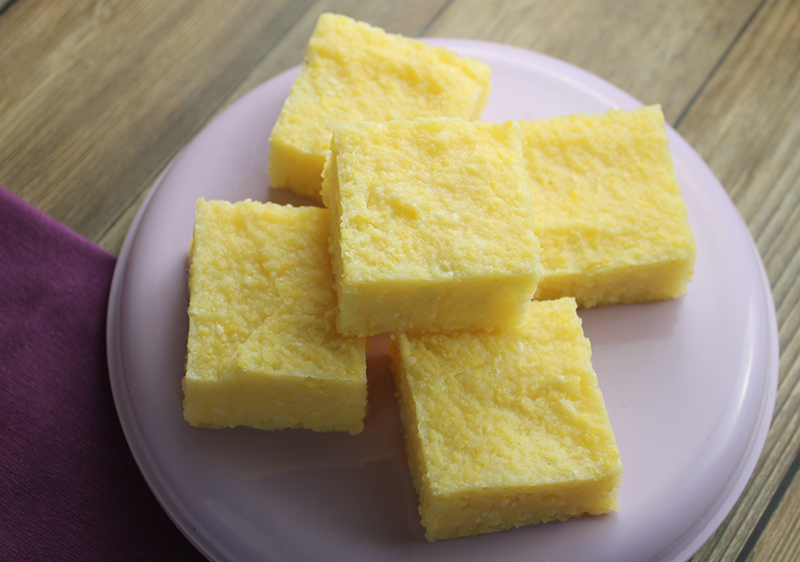
9) How Do You Make Polenta Firm?
Polenta can be consumed immediately when hot as a type of porridge but is more frequently poured into a glass or ceramic dish mold to cool and set.
It will then gelatinize to a firm texture which can be sliced and reheated.
10) Is Polenta Gluten-Free?
Yes, polenta derived from corn is on the list of gluten-free grains. However, it is important if you have celiac disease or any sensitivities to gluten to purchase your pre-cooked or bulk polenta from a certified gluten-free processing facility.
11) What is the Best Type of Polenta?
While you can make polenta from any type of cornmeal, coarsely ground whole corn polenta in our opinion provides the best textural quality when cooked. This is the type we always have on hand in our selection of pantry staples.
We personally purchase dry bulk polenta sold under the name "polenta" or "yellow corn polenta", which is always a coarse uneven cornmeal.
Cornmeal labeled coarse ground is often used interchangeably and provides a similar texture.
Precooked polenta, usually found in tubes here in the U.S., is a convenient alternative to making your own but may lack a little in quality as a shelf-stable product.
Precautions:
Avoid polenta if you are allergic to corn. Seek the advice of a health practitioner before adding polenta to the diet if you are pregnant, nursing, have a serious health condition or are taking any medications.
Shop Related Products (About Affiliates & Amazon Associate Paid Links)
Affiliate Disclaimer: This section contains affiliate product links. If you make a purchase through our recommended links, we receive a small commission at no additional cost to you. Thanks for the support.
